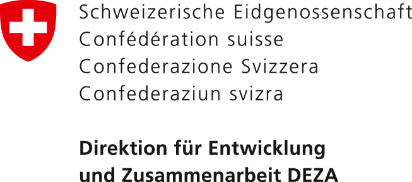Carte blanche
Art that attracts the masses
The walls surrounding the port of Cotonou, Benin's commercial capital, are decorated with murals in a multitude of shapes and colours representing everyday scenes, historical figures, idyllic landscapes and visions of the future. Using different art forms – figurative, abstract, calligraphy – the paintings depict the story of Beninese people going about their day or engaged in creative pursuits. The artists hailing from a wide variety of backgrounds – graffiti artist Cyril Kongo, painter Julien Sinzogan and other talented young artists – have painted their country in all its facets and created narratives of the local way of life.
This art project is just one of many undertaken since Patrice Talon was elected president in 2016. Like Léopold Sédar Senghor in Senegal, he has tapped into the artistic potential in his country and made it the cornerstone of his cultural policy. The government has laid the legal, institutional and artistic foundations for structuring the market. Artists enjoy a stable environment in which their creativity is not only allowed to flourish, they can also make a living from it.
The number of artists has consequently risen considerably, especially after 2022, when an exhibition of contemporary works was juxtaposed with that of the royal treasures returned by France. Benin's cultural diplomacy was successful in securing the return of 26 artworks that the French army had looted during the colonial period in the 19th century. The works were kept in Paris for 130 years, ultimately in the Musée du Quai Branly. The exhibition titled "Art of Benin: from restitution to revelation" showcases both the creative energy of traditional artists and how this is expressed through the skills of the present generation. The exhibition was received so well worldwide that Morocco, Martinique and France made requests for the contemporary part and will display it as a touring exhibition over the next two years.
These and many other artworks are likely to find a place in the museum of contemporary art in Cotonou. Set up only recently, the museum will provide a fitting space for the most creative works of Beninese artists. The country's traditional art will be displayed in the former royal capital Abomey, where it originated hundreds of years ago. The royal palace, which was converted into a museum in the 1960s, will be upgraded. It will showcase unique aspects of the historical kingdom, especially the history of the Beninese 'Amazons', a highly trained, all-female elite unit that acted as the kings' shield and formed the vanguard during military campaigns.
Another distinctive feature of Benin is the omnipresence of Voodoo, the religion of ancestral spirits. There are many stereotypes associated with Voodoo and its image deserves to be reclaimed. Endogenous religions in Benin already have an official holiday, and its popularity has risen after the opening of the international Voodoo museum in Porto-Novo.
History is held in high esteem as a source of artistic renaissance in Benin. More and more monuments and infrastructure that speak to Benin's past, present and future are coming up on city streets and squares. Talon's government is not simply aiming to become Africa's cultural hotspot but is using art as a soft power to make Benin an attractive destination. By 2025, this will become its main draw and accelerate the development of tourism in the country.
FLORENT COUAO-ZOTTI is a journalist and art critic from Benin. He has published two dozen novels, novellas and plays in France and has received many awards, such as the Prix Roland Jouvenel der Académie in 2019. He lives and works in Cotonou, Benin's commercial capital and largest city.

We look forward to your visit. Further Information




